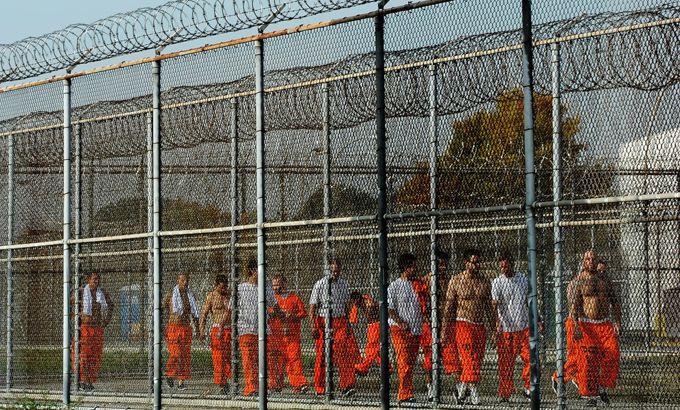
US: A nation of inmates?
We examine the impact of America’s high incarceration rate on its penal system and on poor and minority communities.
There are more prisoners in the US than any other nation in the world.
The country makes up five percent of the world’s population, but accounts for 25 percent of its prison population. And over the last three decades the number held in US federal prisons has jumped by nearly 80 percent.
|
“There has been in this country over the last 30 years a relentless upward climb in the incarcerated population and disturbing as the situation is with the federal prison system, that is really only the tip of the iceberg because the federal prison system is only about 10 percent of the total number of people incarcerated in this country. On any given day, we have about 2.3 million people behind bars in federal, state and local facilities.“ – David Fathi, ACLU National Prison Project |
The number of inmates in US federal prisons has increased from about 25,000 in 1980 to 219,000 in 2012, according to a report by the US Congressional Research Service.
The report says the federal prison system was 39 percent over its capacity in 2011. And the situation is worse for high and medium security male facilities.
High-security prisons were overcrowded by 51 percent, while medium security prisons were overcrowded by 55 percent in 2011.
According to a report by the Government Accountability Office, overcrowding has contributed to worse safety and security conditions for both inmates and staff.
The overcrowded facilities have contributed to a multibillion dollar demand for private prisons. The industry argues it is helping the government save money. But others argue that for-profit prisons only increase the incentive to incarcerate more people.
Almost half of those incarcerated in federal prisons are drug offenders. Another 16 percent of inmates are in prison for offences related to weapons, explosives and arson. Those convicted of immigration violations make up 12 percent of the federal prison population.
|
“Policy makers have come to the realisation, on a state and federal level, that you can’t necessarily build yourself out of a crime situation, that we just can’t continue at these numbers to incarcerate people, and the impact on state budgets and the money spent on a federal level to deal with mass incarceration has just left us in a lot of ways unprotected in other areas.“ – Matthew Mangino, a former DA in Pennsylvania |
And the impact of mass imprisonment spreads far beyond the prison walls.
Sociologists have found that the rise in incarceration rates reduce social mobility and ensure both prisoners and their families remain trapped in a cycle of poverty.
In the US, minorities make up over 70 percent of the federal prison population.
Demographically, African-Americans – who represent 12 percent of the US population – make up 37 percent of federal prisoners.
And Latinos – who are 16 percent of the population – make up 35 percent of prisoners.
So, what is the impact of the high incarceration rate on the US penal system and on poor communities?
To discuss this, Inside Story Americas with presenter Shihab Rattansi is joined by guests: David Fathi, the director of the American Civil Liberties Union National Prison Project; Matthew Mangino, a former district attorney in Pennsylvania; and Marc Mauer, the executive director of The Sentencing Project, and author of the book Race to Incarcerate.
THE US PRISON INDUSTRY
- It is increasingly more expensive to maintain the federal prison system
- Per capita prisoner costs rose from $19,571 in 2000 to $26,094 in 2011
- Bureau of prisons has backlog of 154 modernisation and repair projects
- More offences subject to mandatory minimum sentences since the 1980s
- Mandatory sentences have pushed up inmate numbers for drug offences
- More crimes have been made federal offences since early 1980s
- Crime rates in the US have been falling since the early 1990s
- Sentencing project: prisoners in US declined by about 1.5 percent in 2011
- Some US states have moved to reduce overcrowding in prisons
- Supreme court ordered California to reduce prison overcrowding in 2011
- Budget crises have prompted states to reduce overcrowding in prisons
- For-profit companies control 18 percent of US federal prisoners
- For-profit companies control 6.7 percent of all US state prisoners
- Most new prisons built between 2000 and 2005 are privately run
- Corrections corporation of America is largest private prison operator